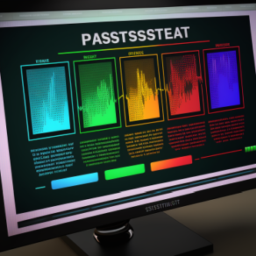

Telephone interpreting is a service which is used to help people who have hearing difficulties. It is often very effective and helps those who have hearing issues to get their needs understood by others.
However, there are several things that need to be considered before making this type of service available. For example, how can this be done in an efficient way? Can this service be scheduled or on-demand? What about privacy concerns?
Contents
Scheduled versus on-demand
There are many options for telephone interpreting. Some of them are on-demand and some are scheduled. The two types differ in their benefits. However, they are both useful for communication.
On-demand phone interpreting is best for those who need to communicate quickly and efficiently. The service is also helpful for people who have limited English proficiency. It’s often used in hospitals, pharmacies, customer service call centers, and other organizations. Unlike other forms of telephonic interpreting, on-demand phone interpreting has no set up fees.
Scheduled interpreting is more expensive than on-demand phone interpreting. This is because you are charged for the time you spend with the interpreter. In addition, you are charged for travel expenses and insurance. Moreover, on-site interpreters may take longer to arrive. For those who need interpreting on a short notice, on-demand phone interpreting is the most cost-effective option.
Having an on-demand interpreting service can also help your business get things done faster. It cuts down on delays and errors. Plus, it saves your staff from having to re-translate conversations. By getting things done right the first time, you can ensure better results and higher client satisfaction.
An on-demand telephone interpreting service is also a good choice for business-to-business interactions. Often, the services are needed to facilitate business deals. If a client is speaking a different language than the one spoken by your employees, a phone interpreting service can make the process go smoothly.
The quality of the interpretation can be affected by the voice of the caller and background noise. You should also ensure that your telephony hardware and connection are working properly. Finally, ensure that you provide your interpreter with a copy of any documents.
Cost-effective versus on-site
In the world of language services, clients frequently ask whether telephone or in person interpreting is more cost effective. The answer to this question depends on the situation, but generally speaking, in-person interpreting can be more expensive than over the phone.
Regardless of which method you use, there are a few things you should know before signing up. For one, telephone interpreting can save you tons of time and money. It’s also a great way to communicate with patients who cannot come to your office.
You can also hire a third-party interpreter to take your calls around the clock. Fortunately, there are plenty of companies out there that can help you find an interpreter that matches your needs and budget.
Another option is to have your own staff interpreter. This option is convenient if you have a good pool of interpreters nearby, but it may not be the most cost-effective option if you need a translator in a hurry.
Telephone interpreting can be convenient and cost-effective, especially when used in conjunction with the right equipment. However, it’s not without its downsides, including a lack of visual cues and technology issues.
One study looked at the effectiveness of remote simultaneous interpreting. Researchers compared it to the more traditional proximate consecutive interpreting. They found that the number of participants talking increased by 28% with simultaneous interpreting. Nonetheless, telephone interpreting was not deemed the best by all.
Some medical providers prefer to have an on-site interpreter in the room. An on-site interpreter can provide more patient understanding and help make them feel more at ease. He or she can also ensure that everyone understands the conversation. But an on-site interpreting service can be costly and can be difficult to schedule.



Privacy concerns
Using a mobile phone to provide an interpreter for your patients can be a hassle. Fortunately, there are several options to choose from. From on-site, to on-call, to a virtual conference, there are ways to ensure that you and your patient are not left in the lurch. However, there are a few considerations to make when picking the best fit for you and your patients. Among the most important are confidentiality, cost, and the ability to communicate in your preferred language. If your lingo doesn’t match your patients, you’ll likely be stuck in the weeds. The key is to find an interpreter you can trust and a provider that is willing to put your best interests first. Lastly, remember that your patient is a person, not a number. For a true one-on-one experience, it’s important to remember that your client is entitled to privacy and respect. This is particularly the case if you are entrusting an expert to your most prized possession. With that in mind, there is no reason to let your patient down, even if that means using a mobile phone. Thankfully, you can easily accomplish the feat with the help of a few tips and tricks. To be on the safe side, you should always ask your client if they’ve already had their say. You can also use the opportunity to remind them of their responsibilities.
Taking the time to educate your clients about how to maximize their privacy and their overall wellbeing will go a long way to ensuring the longevity of your business. Getting the right mobile phone, as well as the requisite software and support, can be the difference between a revolving door and a satisfied customer.
Lack of turn taking
In recent years, phone interpreting has been expanding into additional fields. It’s common now for parties in a meeting to have to interact via telephone. However, because the participants cannot see each other, a lot of issues can arise. For instance, loud background noise or faulty equipment may cause communication problems. And as a result, participants must find ways to solve these problems.
In this study, we examine the occurrence of lapses, or when a recipient foregoes an opportunity to talk. When this happens, both participants try to resolve the lapse by self-selecting. This involves a lot of effort and frustration. But once the lapse is resolved, participants are able to resume normal turn-taking.
The lapse can occur during a turn-transition, or when a participant leaves the conversation to take a call. As a result, the interpreter does not have the opportunity to hear the speaker’s next action. That’s why she must pause after each statement. To avoid these difficulties, she must be patient and calm. She should also avoid scolding tones.
Another issue that can negatively affect turn-taking is latency, or the delay between when a speaker speaks and when the listener is able to understand what she’s saying. Latency frustrates smooth turn-taking because it disrupts the structural organization of the interaction. Also, it can lead to problems like fatigue. Luckily, researchers have discovered techniques to combat these challenges.
One method is to use a video-mediated interaction. By using a camera, the interpreter can view the conversation and make sure that a participant’s gaze is on the right direction. Another approach is to try to identify when the speaker has finished speaking.
Dissatisfaction
The telephone interpreting industry is not without its critics. Despite the ubiquity of the technology, there is still some debate about its effectiveness. While some claim that it is not a true-to-life substitution for face-to-face interaction, others say it is the future of the interpreting profession. Regardless of the reasons for this, it is important to understand the limitations of this technology. There are a few things to keep in mind, such as interpreting in situations where the technology is not applicable.
Aside from the fact that many telephone interpreting services are subcontracted, there is no standardized way to assess the quality of services. Nevertheless, there are a few studies that demonstrate the potential of this technology in health care. Among these is a pilot study performed by the New Jersey Administrative Office of the Courts. This study found that the cost of the system was actually higher than the cost of the training and the actual interpreting sessions. But the most interesting finding was that the regular staff interpreters had less effective and more stressful experiences with this technology. They also reported less accurate interpreting. In other words, the telephone interpreting industry is a flurry of insinuations and overtures, but one thing is for certain: the ubiquity of the technology does not translate to improved quality of service.
One small but important hiccup is that many of the studies do not take into account the technological complexities involved in creating a high quality video-link interface. For example, while the technological wizardry required to make a video-link interface work is impressive, it is no less so when dealing with a large swath of the population that has no practical experience with the technology.















